Certified Jenkins Engineer
Backup and Configuration Management
Github Actions Basics
GitHub Actions is a powerful CI/CD and automation platform built into GitHub repositories. By defining workflow files directly in your project, you can automate builds, tests, deployments, and repository maintenance tasks without relying on external tools.
What Is GitHub Actions?
GitHub Actions lets you create workflows—collections of jobs and steps—that run in response to repository events like push, pull_request, schedule, and more.
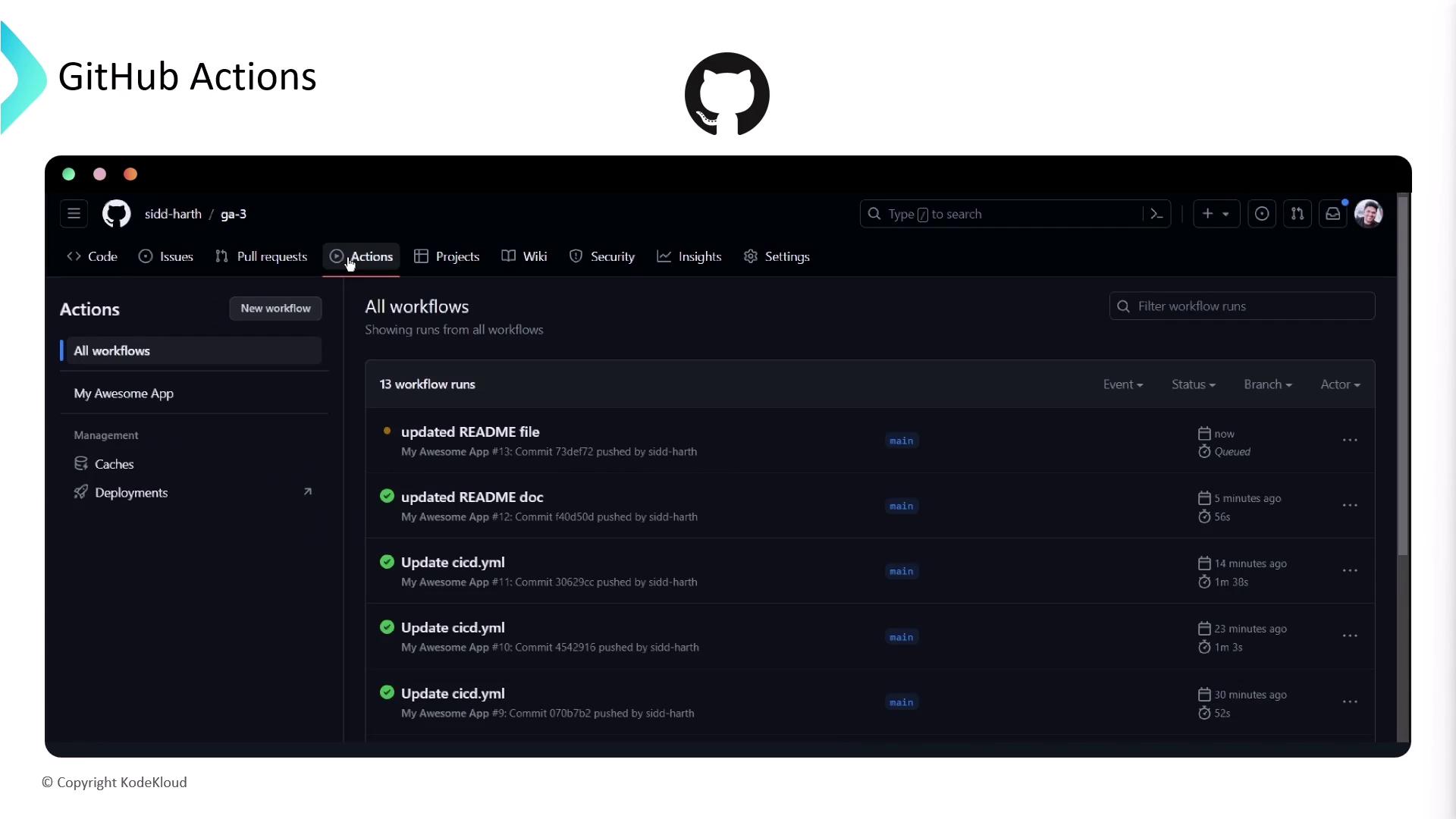
With just a YAML file, you can trigger workflows on every pull request, run unit tests, and even deploy merged changes to production.
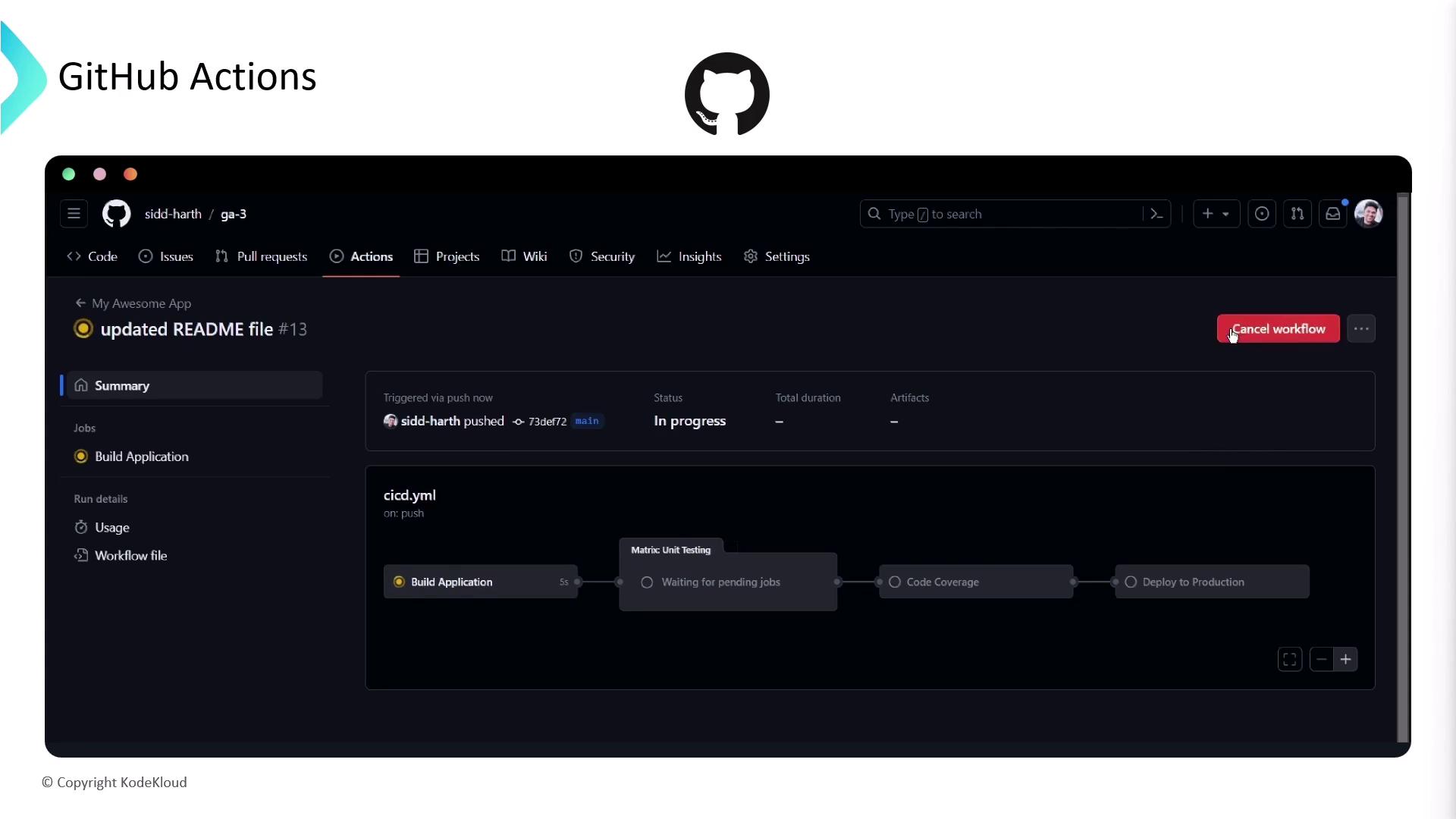
GitHub Actions provides first-class support for runners on Ubuntu, Windows, and macOS.

All infrastructure—server provisioning, auto-scaling, and environment maintenance—is handled by GitHub, so you can focus on writing workflows.
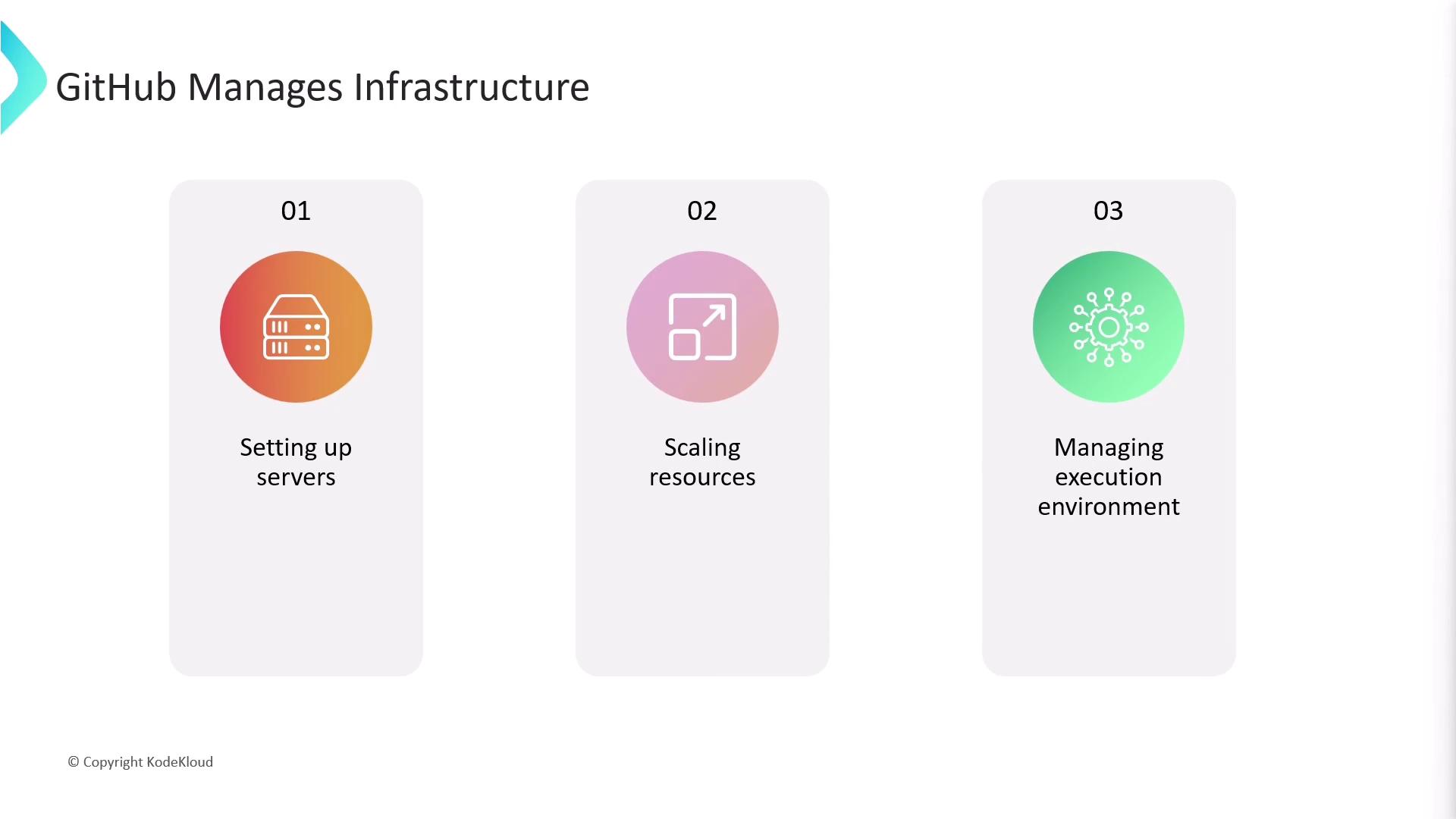
Beyond CI/CD: Repository Automation
While GitHub Actions shines for CI/CD—building, packaging, and deploying code—it also responds to many repository events, such as issues, pull requests, releases, and registry packages:
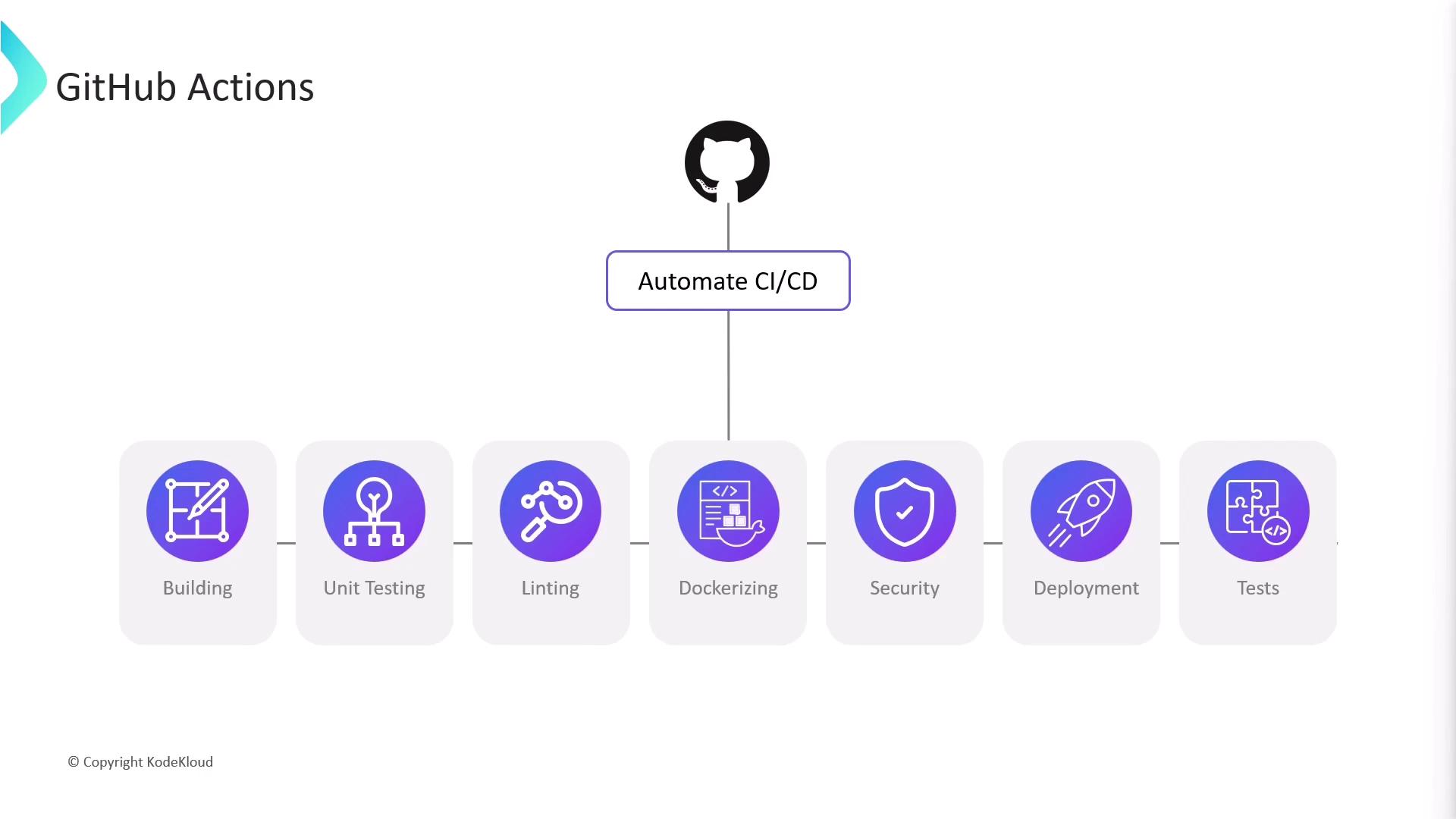
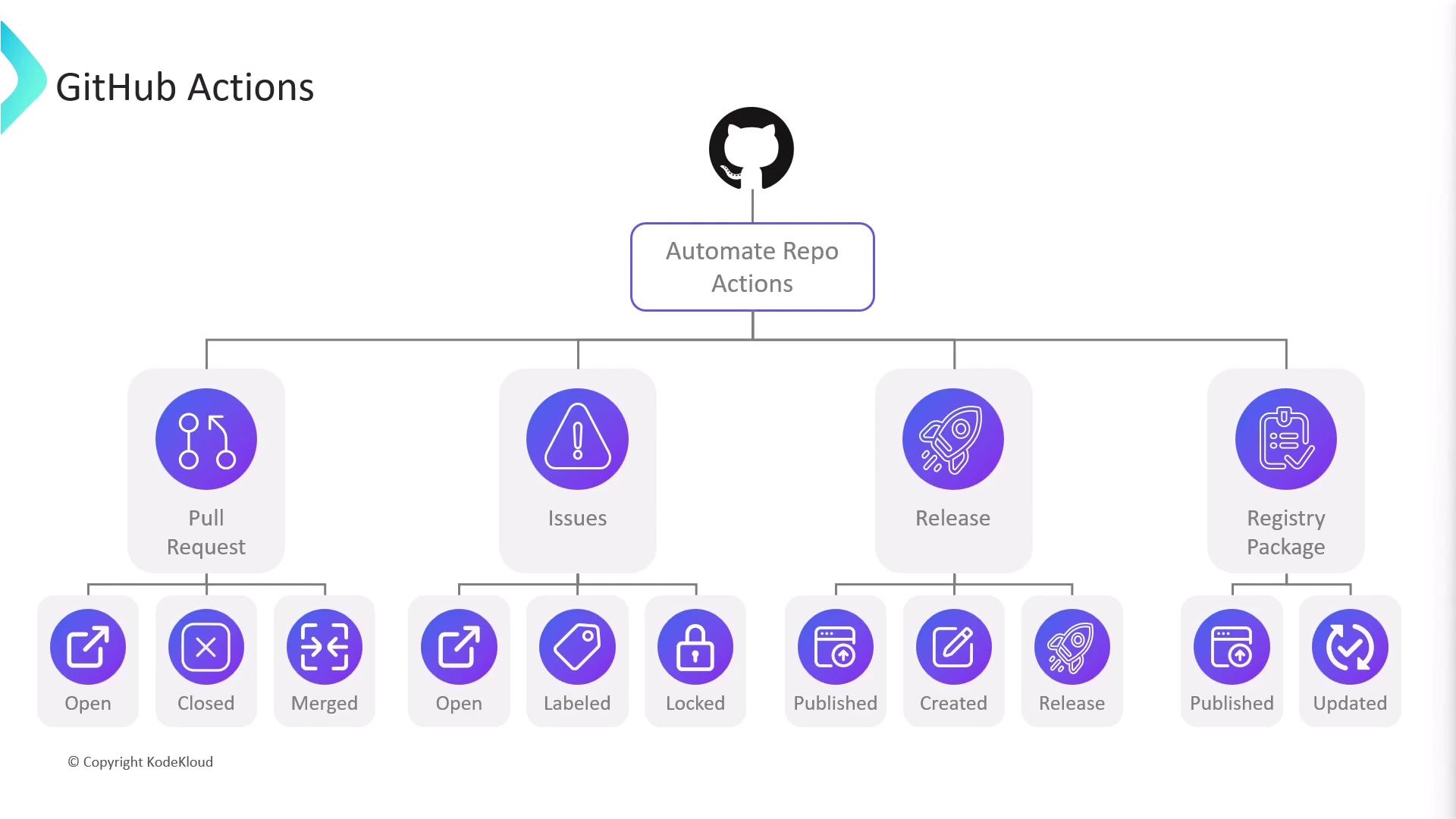
For example, on a new pull request you could automatically:
- Post a welcome comment
- Apply labels based on modified files
- Assign reviewers or assignees
These patterns can extend to issues (opened, labeled), releases (published), and package registry events.
Core Concepts
Workflows
A workflow is defined by a YAML file in your repository’s .github/workflows/ directory. You can have multiple workflows, each triggered by different events:
# .github/workflows/ci.yml
name: My Awesome App
on:
push:
pull_request:
branches: [ main ]
schedule:
- cron: '0 0 * * *'
Note
Workflow files must reside under .github/workflows/ with a .yml or .yaml extension.
Jobs and Steps
A workflow runs one or more jobs, each made up of sequential steps. Jobs run on runners—either GitHub-hosted VMs or your own self-hosted machines.
jobs:
unit-testing:
name: Unit Testing
strategy:
matrix:
os: [ubuntu-latest, macos-latest, windows-latest]
node-version: [14, 16]
runs-on: ${{ matrix.os }}
steps:
- name: Checkout code
uses: actions/checkout@v3
- name: Set up Node.js ${{ matrix.node-version }}
uses: actions/setup-node@v3
with:
node-version: ${{ matrix.node-version }}
- name: Install dependencies
run: npm ci
- name: Run tests
run: npm test
In this example:
- The workflow triggers on
pushandpull_request. - A matrix strategy runs tests across multiple OS and Node.js versions.
- Each runner checks out code, installs Node.js, installs dependencies, and executes
npm test.
Hosted Runners
GitHub-managed runners are provisioned on-demand (Linux, Windows on Azure, and macOS on GitHub’s cloud). Each job gets a clean VM:
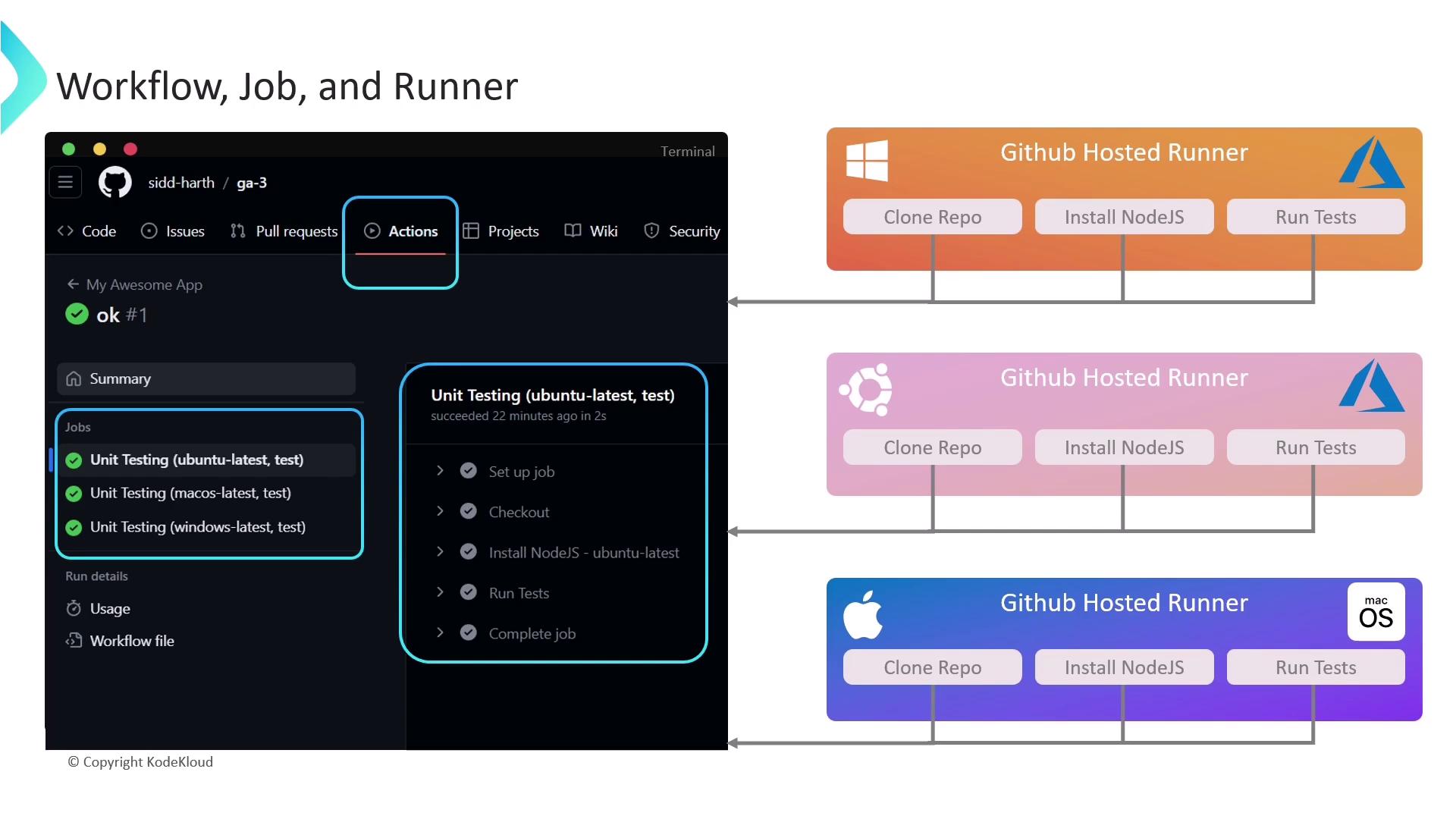
After a run completes, you can inspect logs, review step details, and download build artifacts from the Actions tab.
Runner Types: GitHub-Hosted vs. Self-Hosted
Self-hosted runners let you use your own hardware, install custom software, or target GPUs. Compare the two options:
| Runner Type | Hosting | Customization | Cost Model | Managed By |
|---|---|---|---|---|
| GitHub-hosted | GitHub cloud (Azure/macOS) | Limited to preinstalled tools | Included in GitHub plan (usage limits apply) | GitHub |
| Self-hosted | Your servers or cloud | Full control | You bear infrastructure & maintenance | You |
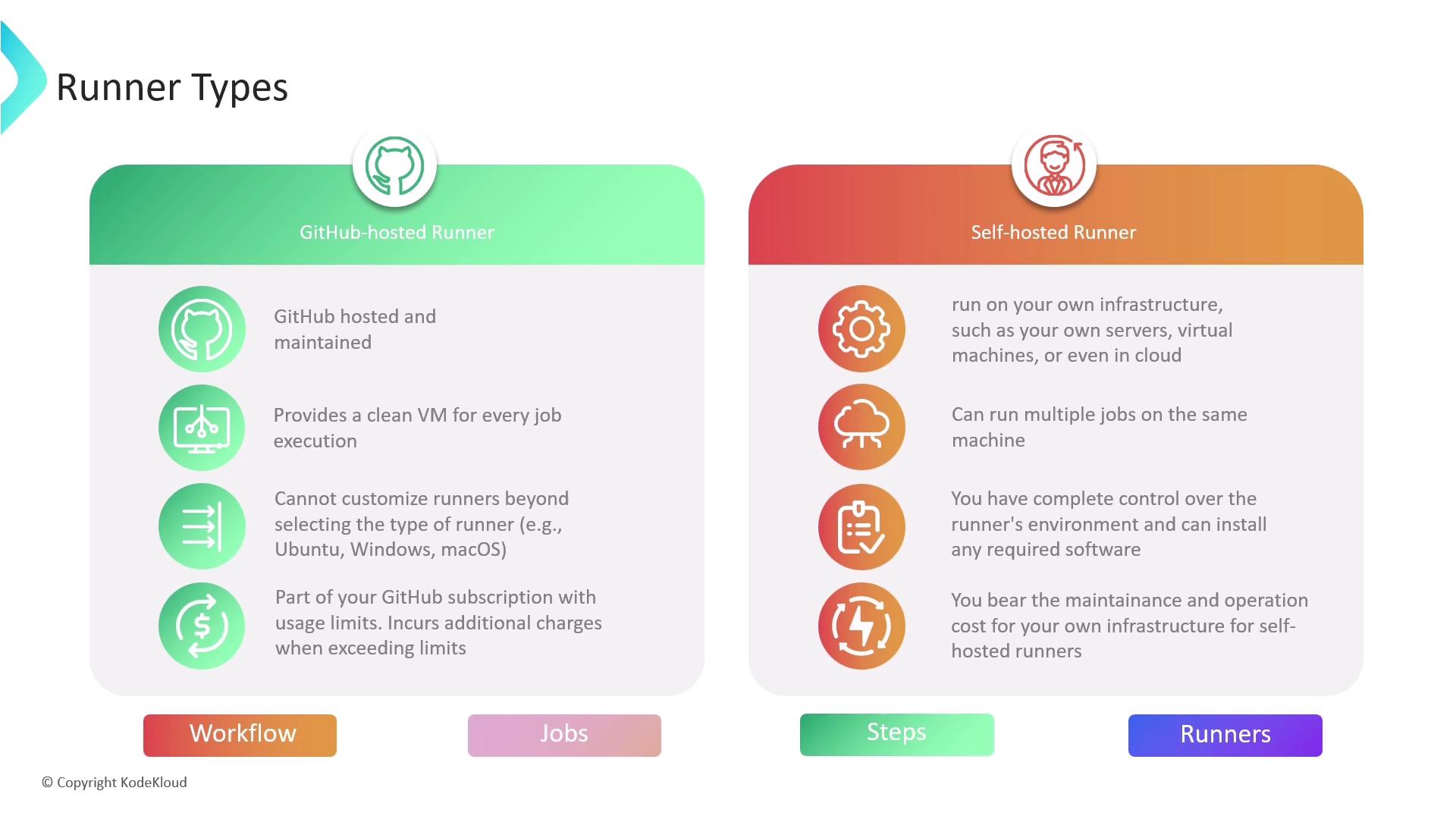
Warning
GitHub-hosted runners have usage quotas based on your plan. Monitor minutes and storage under Billing settings.
This article covered the essentials of GitHub Actions: defining workflows, splitting tasks into jobs and steps, leveraging matrix builds, and choosing the right runner. For more details, see the GitHub Actions documentation.
Watch Video
Watch video content